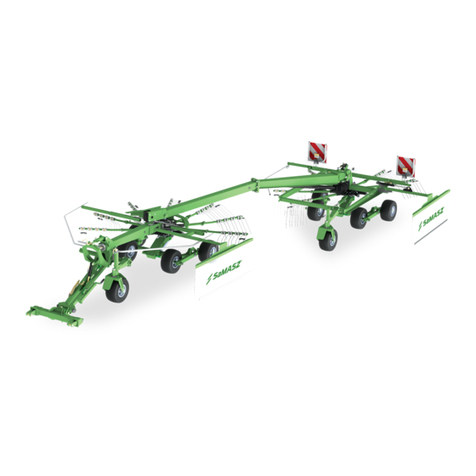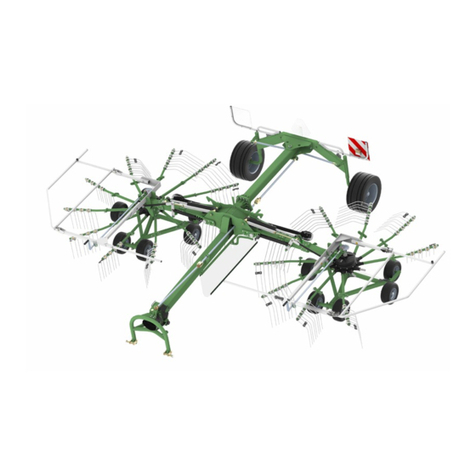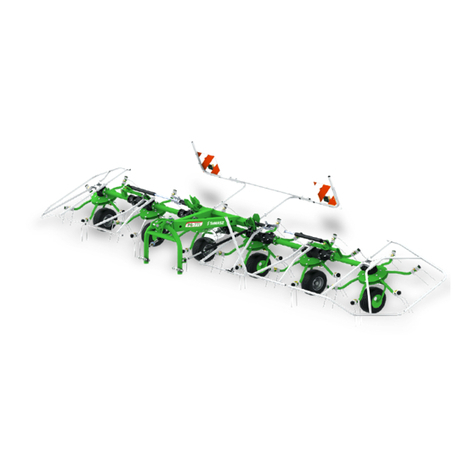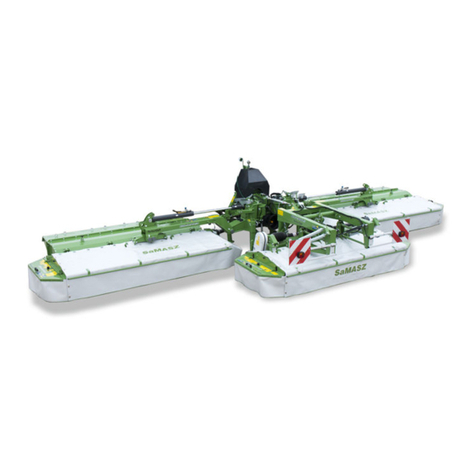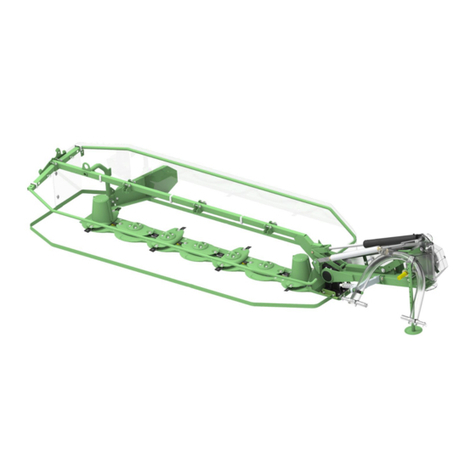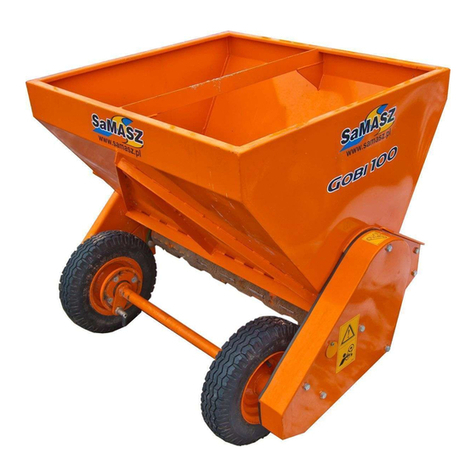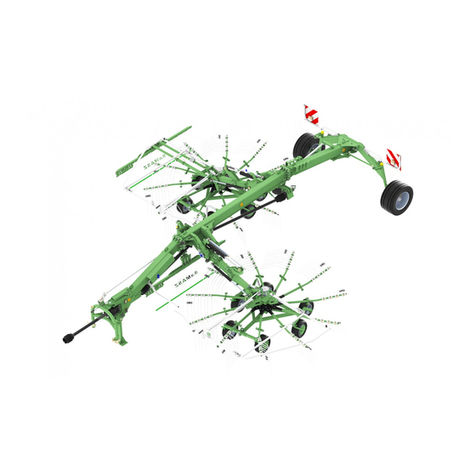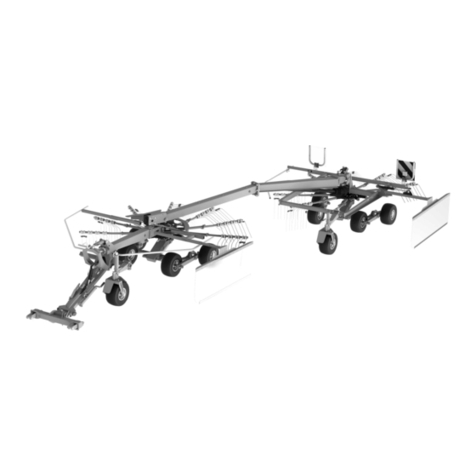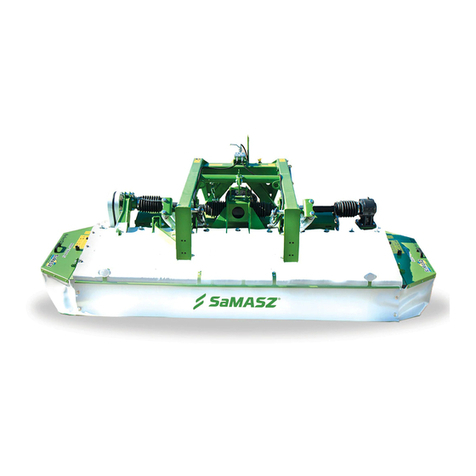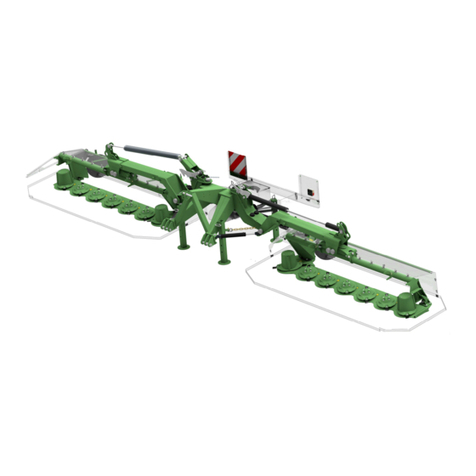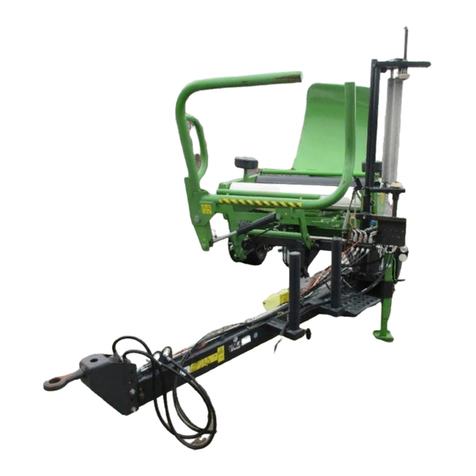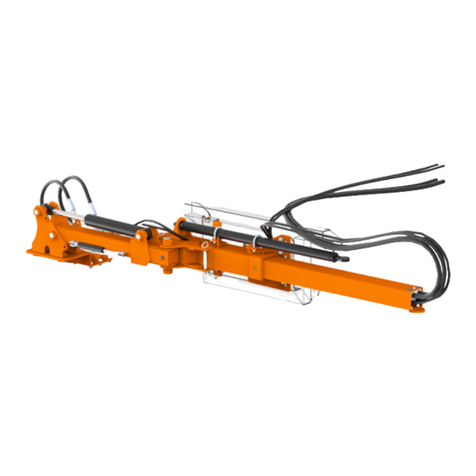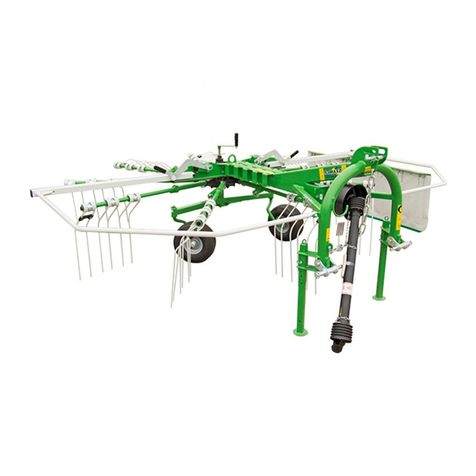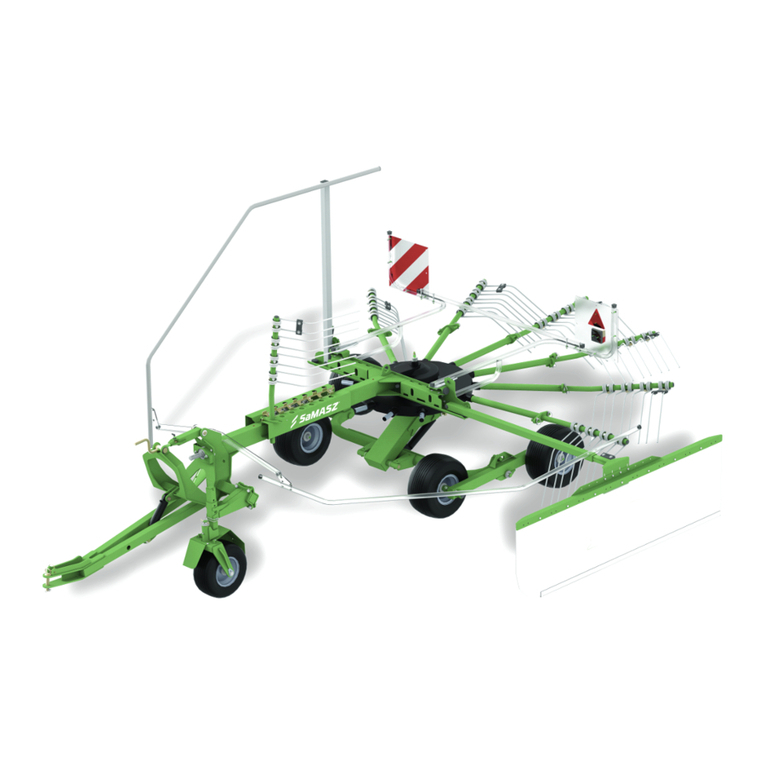
Operator's Manual
Carrier with hydraulic extension
FISHER
- 6 -
Respect safety labels regarding hazards, and warning signs placed on the machine.
Before you start the vehicle, the Fisher carrier is aggregated with, make sure that all drives are
turned off and the levers that turn the hydraulics are in neutral position.
Never leave the vehicle’s engine running without supervision. Before you leave the vehicle, turn
off the engine and remove the key from its ignition.
Never operate the machine when driving backwards.
Never get onto the machine.
Permissible inclination of the machine on a slope when working and during transport is 8°.
Exceeding this incline can result in machine overturn.
Never stand between vehicle and machine unless the aggregation is secured against moving by
the vehicle’s brake.
When the parts of the machine need replacement, use only original spare parts as described in the
spare parts list.
Hydraulic hoses should be periodically checked and if any damage to the hoses have occurred or
if they have been used more than the required period, replace with new ones. Replace only with
hoses conforming to the manufacturer's specifications.
Period of use of hydraulic hoses should not exceed 5 years (including storage time).
Before any service works on the hydraulics, stop the vehicle's engine and take the ignition key
out.
Do not drain oil onto the ground, to the sewerage system, into rivers or lakes. For temporal
storage of used oils use tight tanks only.
Used oils contain substances harmful for the natural environment and should be delivered to a
proper used oil treatment plant.
Never use scotch tape to repair hydraulic hoses.
When connecting hydraulic hoses to the vehicle’s hydraulic connectors, make sure that there is no
pressure in both the vehicle’s and the machine’s hydraulic system.
Check, and if needed adjust, tightness of hydraulic connectors, as they can become loose during
the operation, what may lead to damaging the engine and the hydraulic pump.
When operating the hydraulics, always wear protective glasses and gloves. Hydraulic oil leaking
under pressure (16MPa) may penetrate the skin and cause its infection thereafter. If this occurred,
immediately visit a doctor.
The machine should be stored under a roof and in a way as to not be hazardous both to people or
animals.
Mount and dismount the machine on even and paved surface while keeping particular attention.
Before moving, make sure whether there are no unauthorized personnel directly nearby the
machine, give an acoustic signal.
For any break in the machinery operation turn off the drive.
Periodically check bolts and other fasteners. Do not operate with damaged or worn fasteners.
Do not operate the machine after dusk.
Do not leave the aggregate on slopes without any protection.
Do not leave the tractor's cabin or loader when driving.
In the event of a serious failure, stop the machine's drive, turn off the vehicle's engine and take
out the ignition key. Then call for technical service, and if an accident (in this case: road accident)
occurs, respect first aid rules and contact responsible authorities.
Do not transport any persons on the machine.

